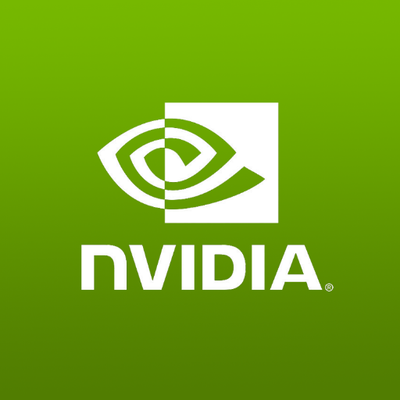
NVIDIA Behavioral Interview Template — Data Analyst (Engineering Track)
This behavioral interview is tailored to NVIDIA’s engineering-centric Data Analyst roles embedded in product, platform, and data center organizations. Expect a fast-paced, probe-heavy conversation focused on end-to-end ownership, analytical rigor, and cross-functional impact in high-velocity environments. Interviewers typically include an analytics manager or senior IC and may include an engineering or product partner. Answers should be specific, metrics-backed, and structured (STAR), with clear articulation of trade-offs, ambiguity management, and stakeholder influence. What this interview covers at NVIDIA: - Ownership and Bias for Action: Examples where you framed an ambiguous business/engineering question, defined success metrics, and drove outcomes under tight timelines (e.g., product or platform launches). Emphasis on how you chose the highest-leverage work and unblocked yourself without waiting for perfect data. - Stakeholder Management in a Technical Context: Collaborating with PMs, engineers, researchers, solutions architects, and business teams; negotiating priorities; resolving conflicting asks; and aligning on a single source of truth across organizations. - Analytical Rigor and Data Quality: Establishing trustworthy metrics, auditing data pipelines, responding to incidents, and communicating the impact of data quality on decisions. Expect deep dives on how you verified assumptions and quantified uncertainty. - Decision-Making Under Ambiguity: Designing experiments (A/B tests or quasi-experiments), defining guardrail metrics, interpreting noisy results, and making recommendations when evidence is partial or time is constrained. - Communication and Executive Readouts: Translating complex analyses into concise, numbers-first narratives for senior audiences. Expect follow-ups that test whether you can defend assumptions and simplify without losing precision. - Learning and NVIDIA Context: Curiosity about accelerated computing and AI; awareness of NVIDIA products and ecosystems; and examples of adopting new tools (e.g., SQL/Python, distributed query engines, or GPU-accelerated analytics) to speed up insights. - Values and Teaming: Low-ego collaboration, intellectual honesty, and doing what’s right for customers and partners; navigating disagreement constructively; mentoring and documenting for reproducibility. Suggested flow (60 minutes): - 0–5 min: Introductions and role context. - 5–25 min: Project deep dive (one substantial analytics project with measurable outcomes; interviewer will probe for decisions, trade-offs, and data quality handling). - 25–40 min: Scenario-based questions (ambiguous asks, conflicting metrics, break-fix under time pressure, stakeholder conflict resolution). - 40–55 min: Values and teaming (feedback culture, ownership, learning mindset) plus NVIDIA context (how you stay current and apply new techniques/tools). - 55–60 min: Candidate questions. Sample behavioral prompts (used to probe depth and NVIDIA fit): - Tell me about a time you owned an analytics problem end-to-end—from ambiguous ask to decision and impact. What changed because of your work? - Describe a situation where two teams reported different numbers for the same KPI. How did you establish the source of truth and align stakeholders? - Walk me through an experiment you designed or inherited that had inconclusive or noisy results. What did you do next, and what decision did you recommend? - A senior partner asks for a dashboard you believe won’t solve the root problem. How do you respond and reframe? - Share a time you had to deliver insights under a hard deadline (e.g., pre-launch). How did you prioritize, manage risk, and communicate uncertainty? - Tell me about a data quality incident close to an executive readout. How did you triage, communicate impact, and prevent recurrence? - Describe a disagreement with a technical stakeholder (engineer/researcher) about methodology. How did you handle it, and what was the outcome? - What is something new you learned recently (tooling, methodology, or domain knowledge such as accelerated analytics) and how did it materially speed up or improve your analysis? Signals NVIDIA interviewers look for: - Impact Orientation: Clear business or engineering outcomes with quantified results; ability to connect analysis to product or platform decisions. - Depth Before Breadth: Willingness to drill into assumptions, data lineage, and edge cases; comfort defending methodological choices. - Velocity with Rigor: Ability to move fast while preserving correctness (guardrails, sanity checks, staged rollouts). - Cross-Functional Influence: Proactive alignment, crisp communication, and skillful handling of disagreement. - Growth Mindset: Evidence of continual learning and pragmatically adopting better tools/processes. Red flags to avoid: - Vague outcomes, weak ownership, or inability to quantify impact. - Over-indexing on tooling without explaining decision logic or business relevance. - Hand-waving over data quality issues or conflicting metrics. - Difficulty communicating trade-offs to non-technical partners. Candidate preparation tips aligned to NVIDIA style: - Prepare one primary and one backup project with measurable outcomes and artifacts (queries, dashboards, experiment designs). Be ready to whiteboard your metric definitions and decision path. - Bring a concrete example of a data integrity challenge and how you instituted prevention (tests, lineage docs, SLAs, monitoring). - Expect rapid follow-ups; answer succinctly with numbers first, then context. Tie your examples to customer or product impact and how you improved speed/efficiency.
8 minutes
Practice with our AI-powered interview system to improve your skills.
About This Interview
Interview Type
BEHAVIOURAL
Difficulty Level
4/5
Interview Tips
• Research the company thoroughly
• Practice common questions
• Prepare your STAR method responses
• Dress appropriately for the role